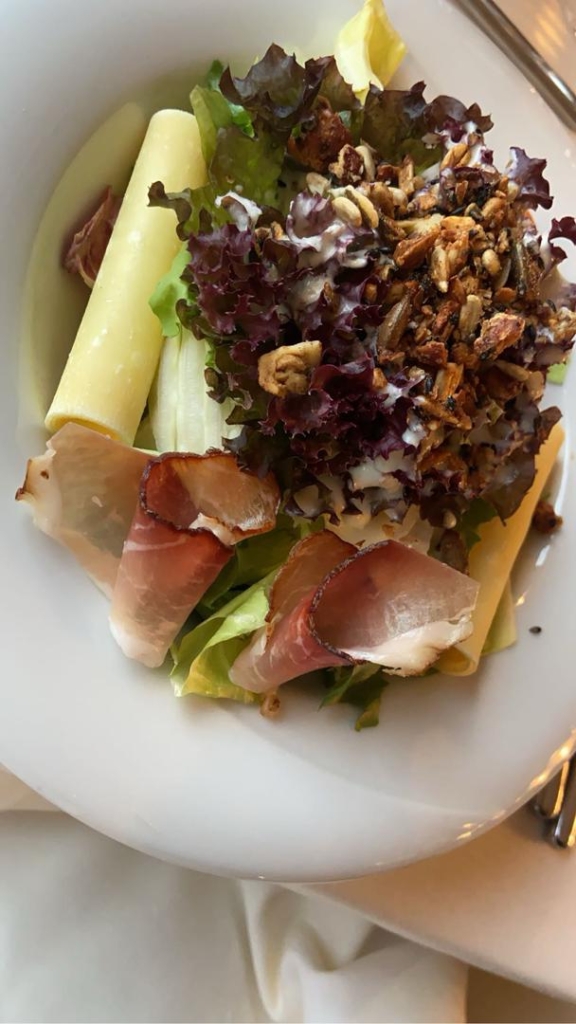Switzerland has a strong and ancestral dairy farming and cheese-making tradition. The rugged nature of the country makes approximately 80% of the agricultural land unsuitable for cultivation and, hence, mainly exploited for cattle and sheep farming. This mode of exploitation has forged a large part of the Swiss landscape, in the Alps, the Jura, and on the Swiss Plateau.
A Symphony of Tradition and Nature
A trip to the Alps makes one wonder whether the Beatles' song “Till There Was You”, with its lyric line “There were bells on a hill,” was inspired by a visit to the Alpines in Switzerland. Once in the Alps, one cannot escape the sound of bells around the necks of cattle. Here, the rhythm of life revolves around the harmonious bond between humans, animals, and the environment.
Among those dedicated to preserving this tradition are Jürg and Hanspeter Iseli, twin brothers who operate a farm and small-scale cheese factory in the Berner Oberland, perched at 1,750 meters above sea level. Hanspeter offers a glimpse into the art of cheese-making:

“The goal of cheese making is to control the spoiling of milk into cheese. Cheese is made by bringing milk in the cheese vat to a temperature required to promote the growth of the bacteria that feed on lactose and thus ferment the lactose. During the fermentation process, once sufficient lactic acid has been developed, curdled milk is added to cause the casein to precipitate. Once the cheese curd is partially dehydrated, the water is released. The curd is then cut into desired shapes and the temperature is raised to approximately 39 °C (102 °F) to solidify it”.
Gruyère: A Legacy of Excellence
The region of Gruyère in Switzerland has been known for its cheese production since the 12th century. However, there was no trade protection until the company, Le Gruyère AOP was granted a Controlled Designation of Origin at the national level in 2001.
“This certification ensures that we maintain the quality, traceability, and authenticity of Gruyère while promoting it globally,” explains Philippe Bardet, Marketing Manager at Le Gruyère AOP.
This recognition safeguards the traditional recipe, unchanged since 1115, and reinforces the global reputation of Gruyère as a symbol of Swiss culinary excellence.
Supporting Alpine Farmers
Cheese is considered to be part of Switzerland's national heritage. It has become, together with chocolate, an archetypal Swiss food product. Hence, the Swiss government plays a vital role in sustaining Alpine farming. Farmers like the Iseli brothers receive subsidies to graze cattle in high-altitude pastures, keeping the Alps vibrant and productive year-round.
“In Switzerland, the government pays farmers that move their activities to the Alps. For every cow kept in the Alps for 100 days, we earn 600 Swiss francs,” says Jürg. “This is an initiative not to only motivate farmers but also to help preserve the landscape and its biodiversity.”
Tradition Meets Innovation
Meanwhile, a third-generational dairy farmer, William Macheret believes that mechanising the milk extraction process will expedite the cheese-making process and reduce the workload. However, others believe that would alter the traditional recipe.
“Using robots in dairy production expands the possibilities of finding innovative ways to work in this field. The concerns raised are normal because there’s the fear that using machines to milk the animals will take away the traditional effect of the cheese, which happens to be one of the strongest marketing messages,” he highlighted.

Swiss milk production represents about $2.3 billion per year, more than 20 percent of total agricultural production. The dairy industry is thus the most important branch of the Swiss food industry. Switzerland’s cheese-making heritage is more than an industry; it’s a reflection of its people’s resilience, ingenuity, and reverence for nature. As farmers, artisans, and policymakers work together to honor tradition while embracing innovation, the story of Swiss dairy excellence continues to inspire—and delight—the world.
Latest Stories
-
The National Cathedral Psychosis, The Hole in Christ’s Heart and other holes in our body politic
28 minutes -
NDC Obuasi East MP-elect hails Supreme Court decision on re-collation
9 hours -
2024/25 GPL: Kwame Opoku scores on return as Asante Kotoko beat Gold Stars
10 hours -
Philip Nai and friends spend time with kids of Agblezaa on Christmas eve
11 hours -
Education is in crisis – NCPTA General Secretary
11 hours -
Celebrating 65 years of impact: Commonwealth scholars and fellows alumni in Ghana
11 hours -
Our confidence in the law has borne fruits – Ebi Bright on SC ruling
12 hours -
Mandamus application to be heard by new High Court judge – Supreme Court rules
12 hours -
Krofuom residents attack GNFS personnel as fire destroys Trinity TV and church
12 hours -
Movie review: Peter Sedufia’s ‘One Night Guests’
13 hours -
Three dead, several injured in accident on Cape Coast-Accra highway
13 hours -
MTN donates to support two hospitals in Savannah region
13 hours -
NDC victory a call to action for agricultural and economic revitalization in Ghana – Klutse Kudomor
13 hours -
Adidome Chief alarmed over rising teenage pregnancy in Central Tongu, calls for collective stakeholder action
13 hours -
MTN Foundation celebrates Christmas with new mothers across Ghana
13 hours

